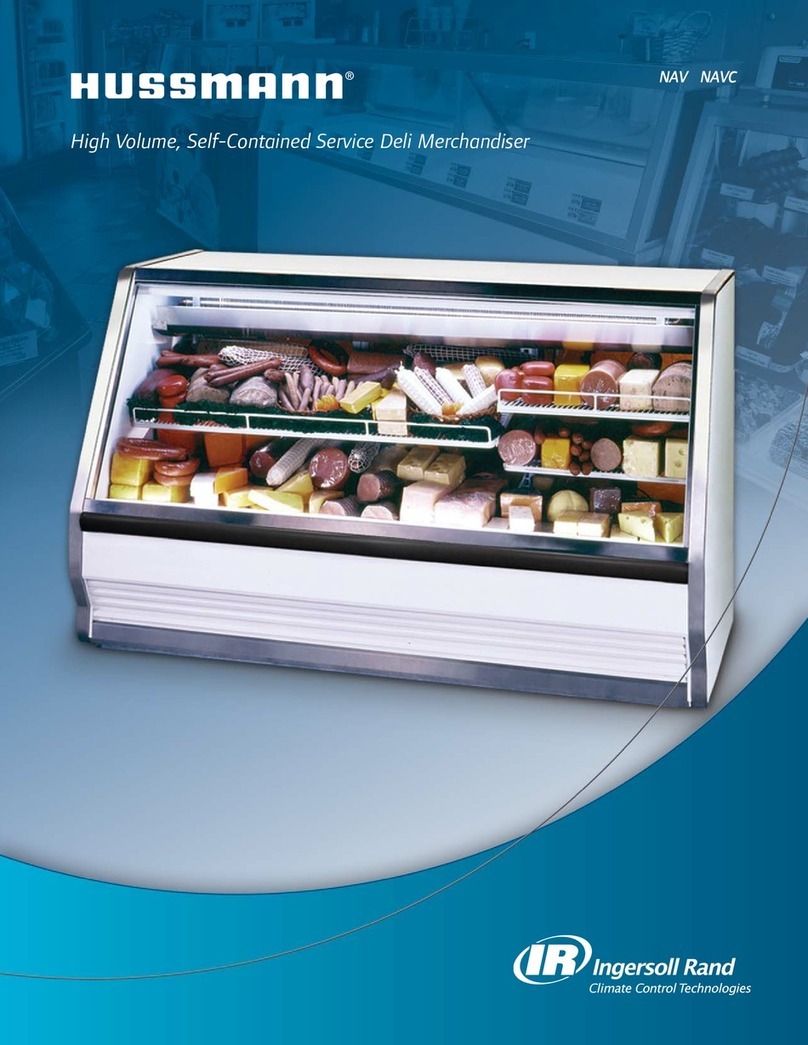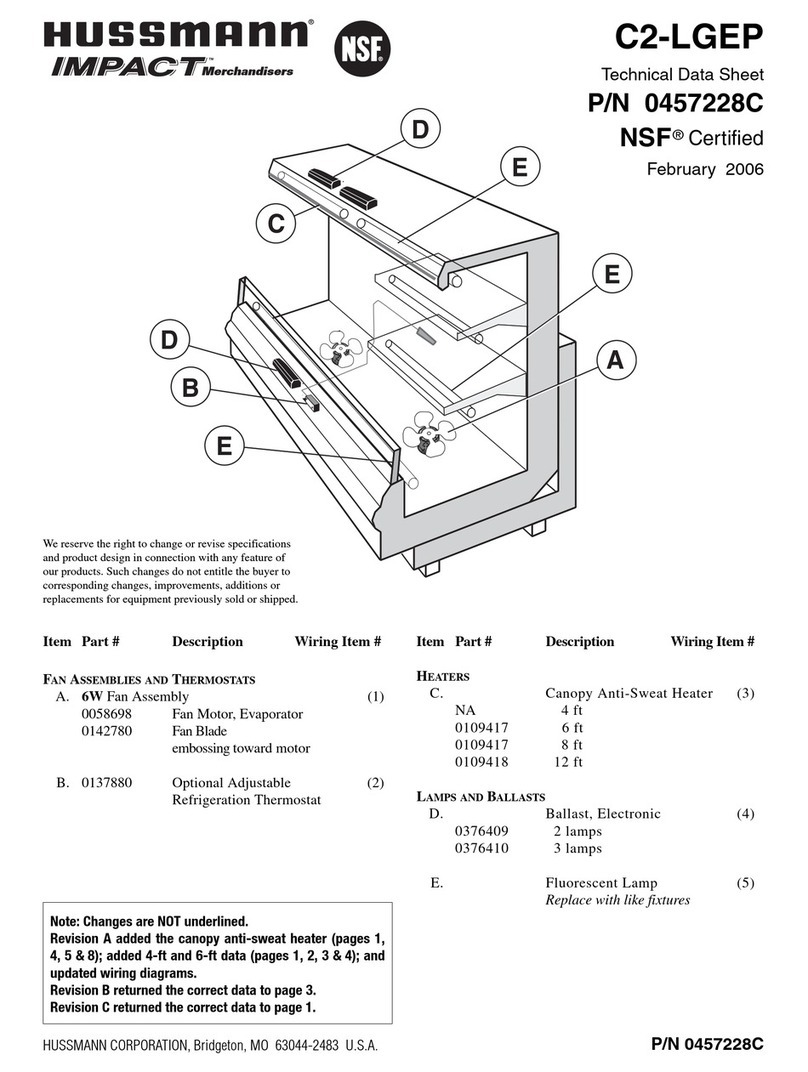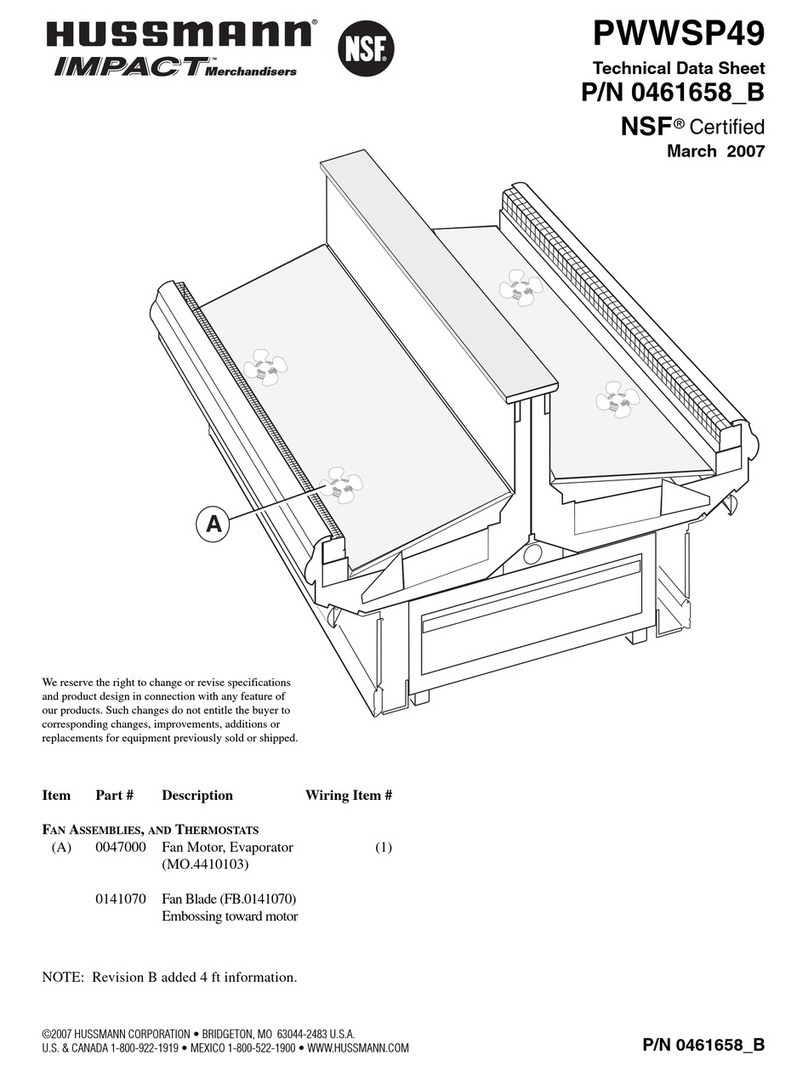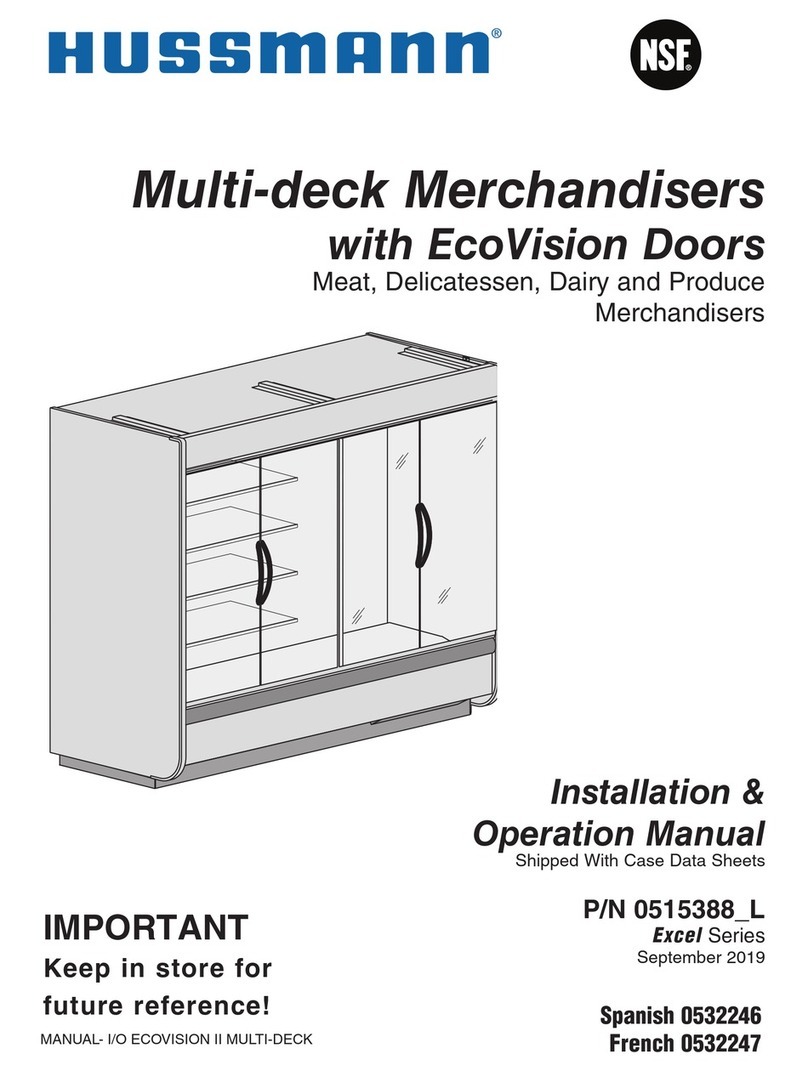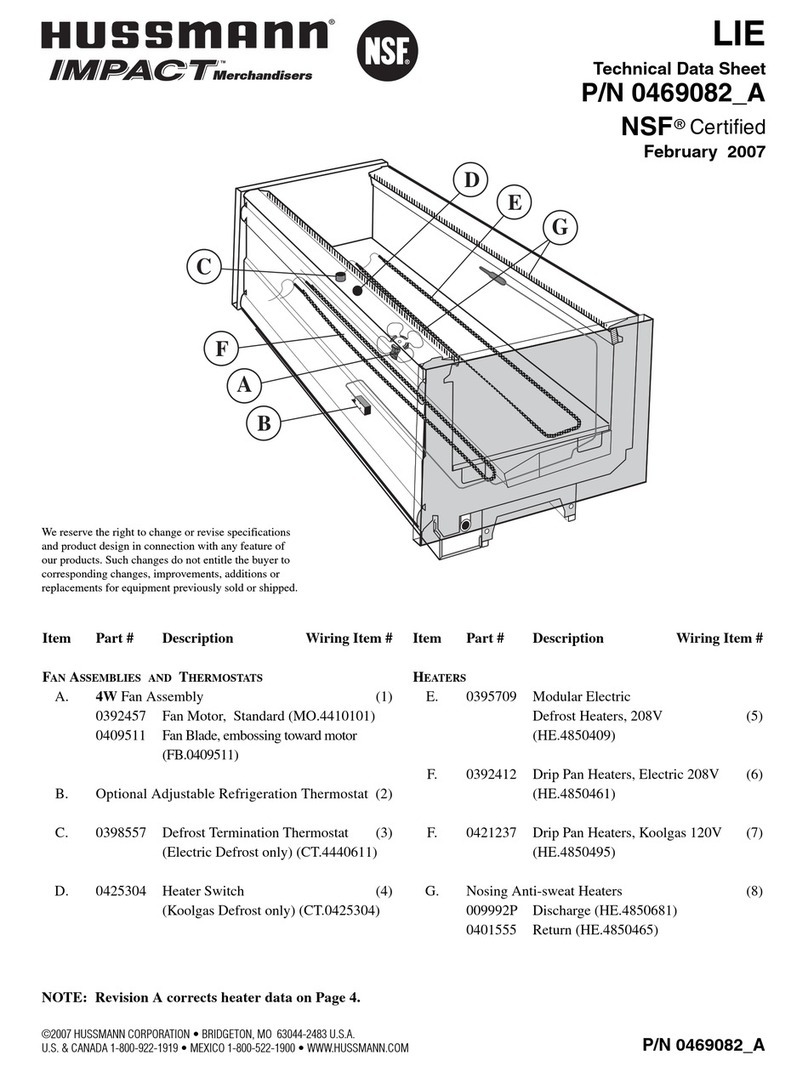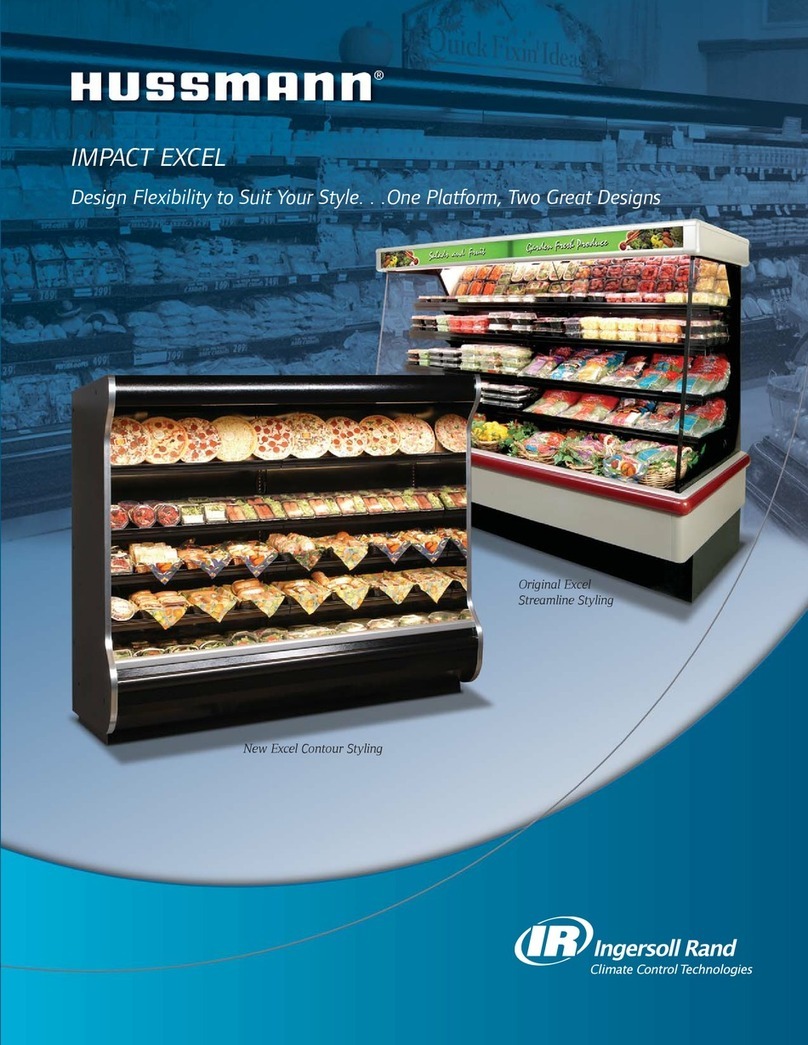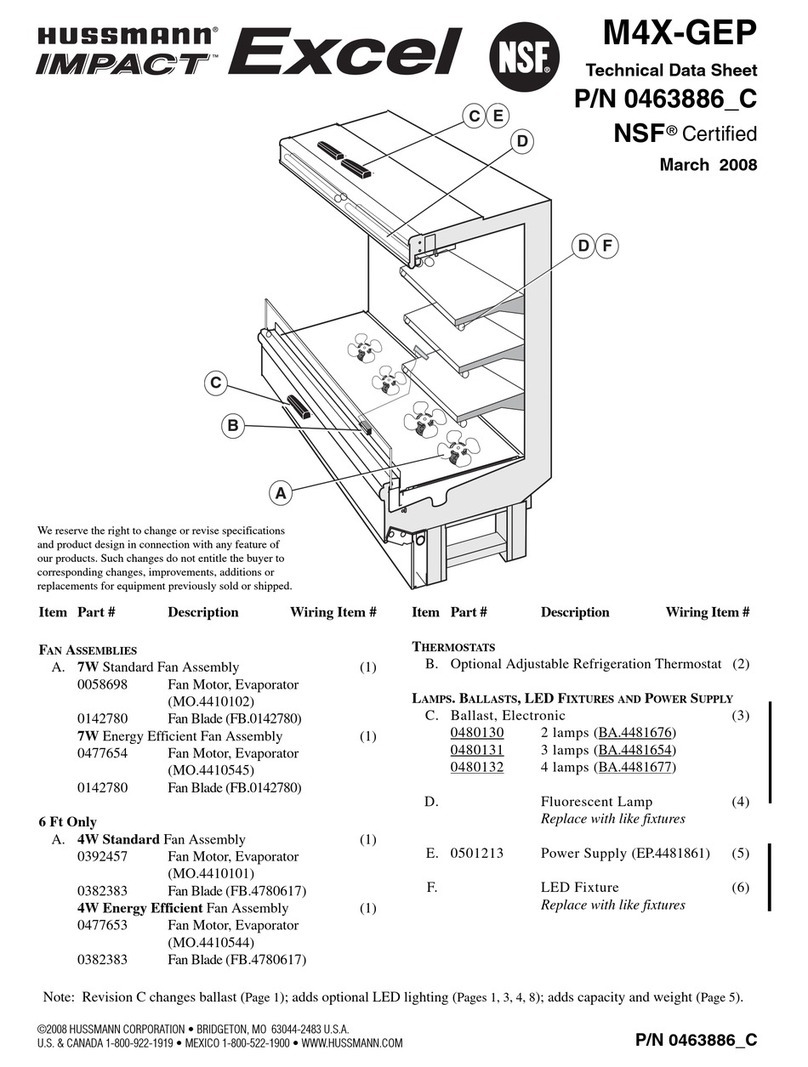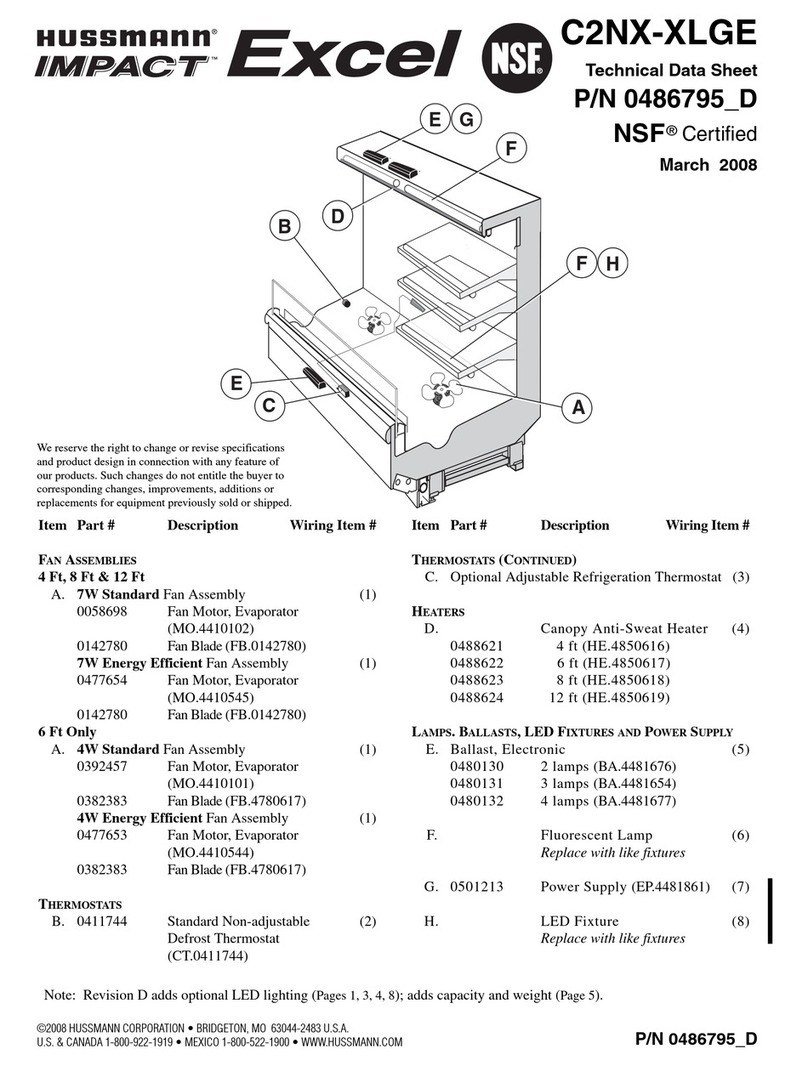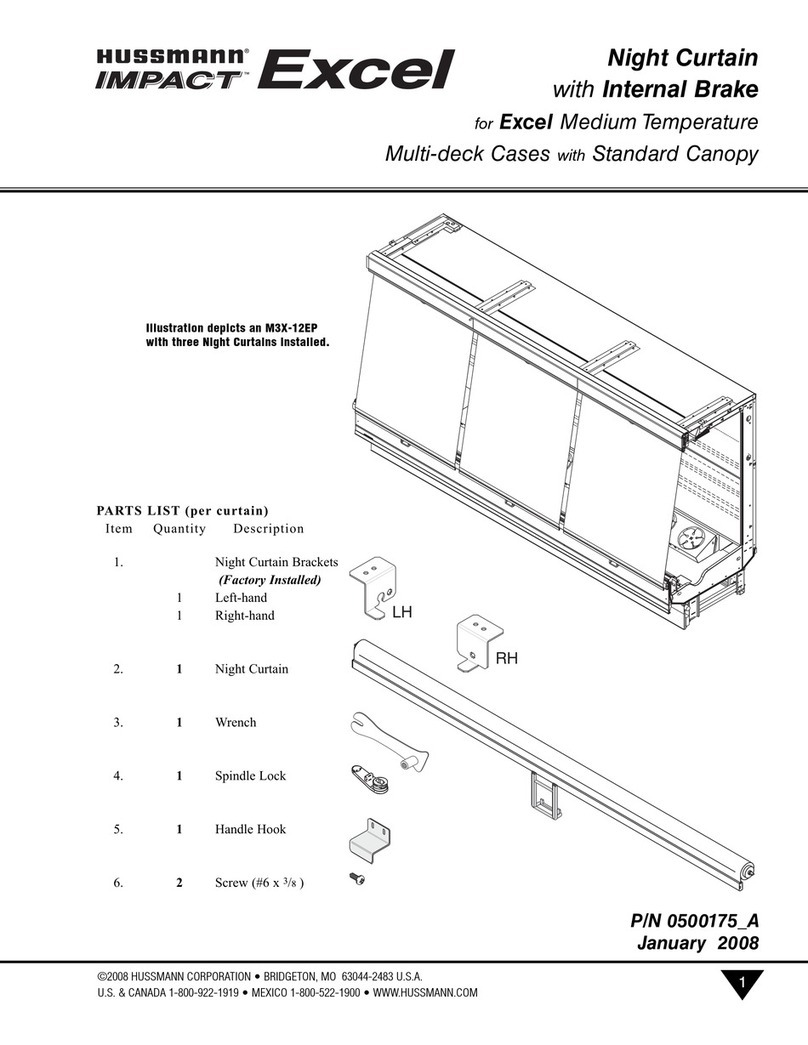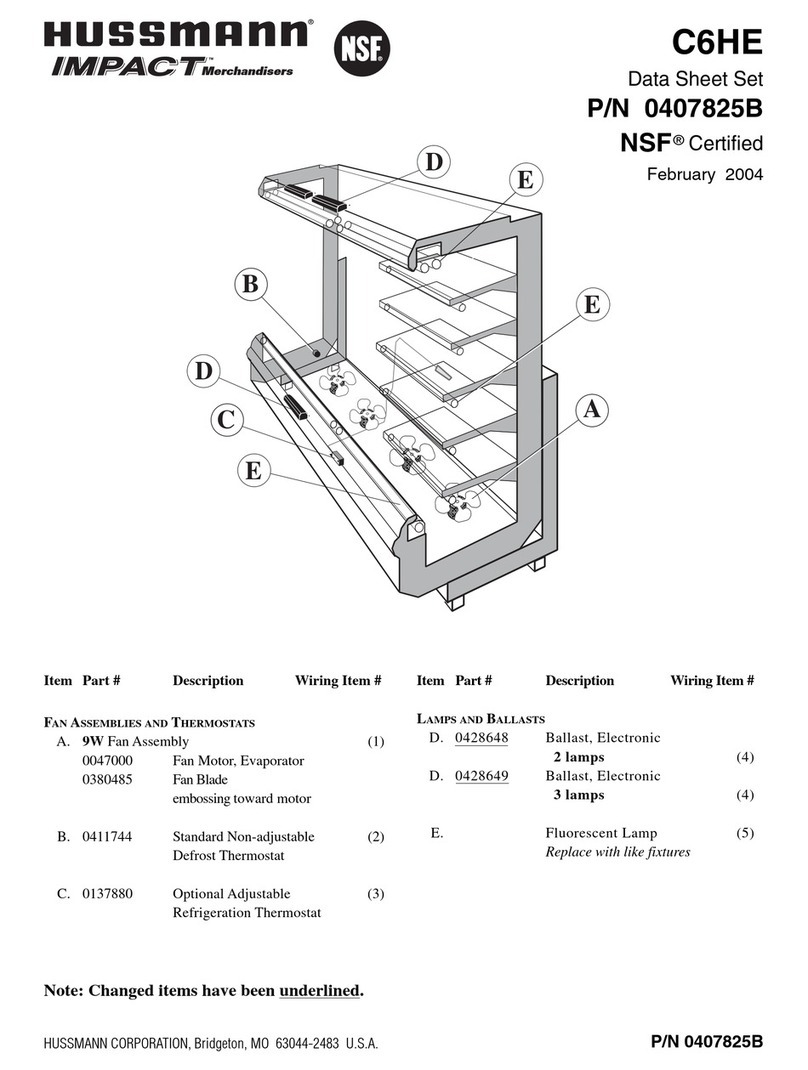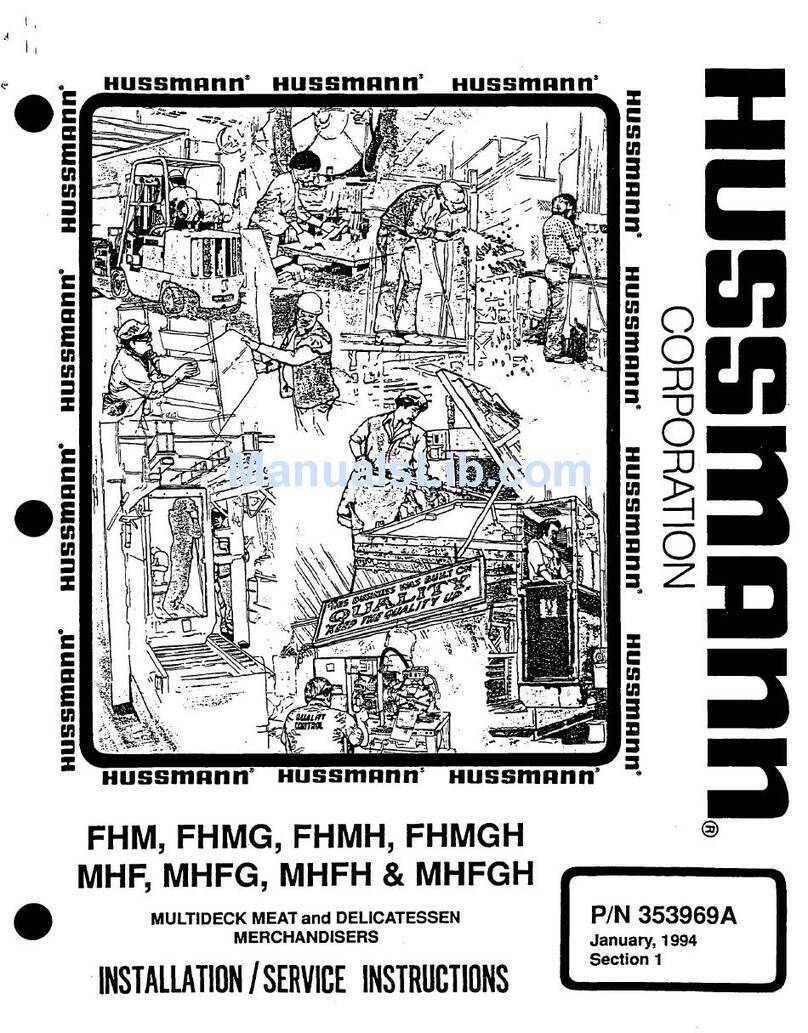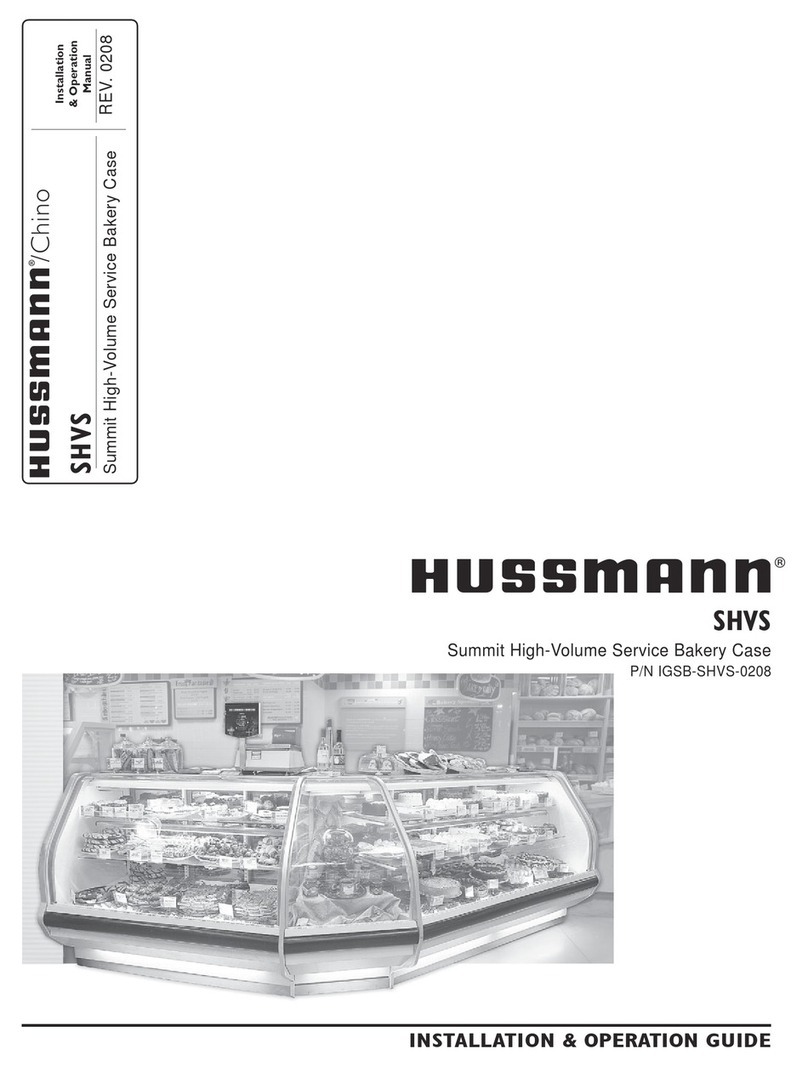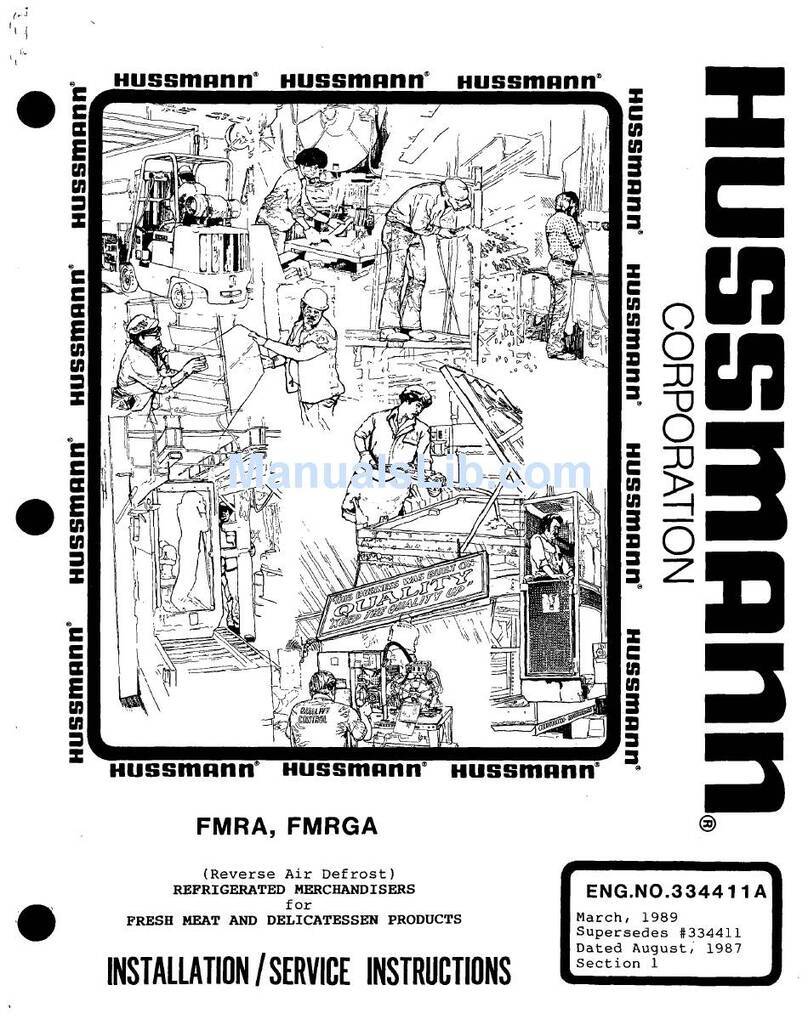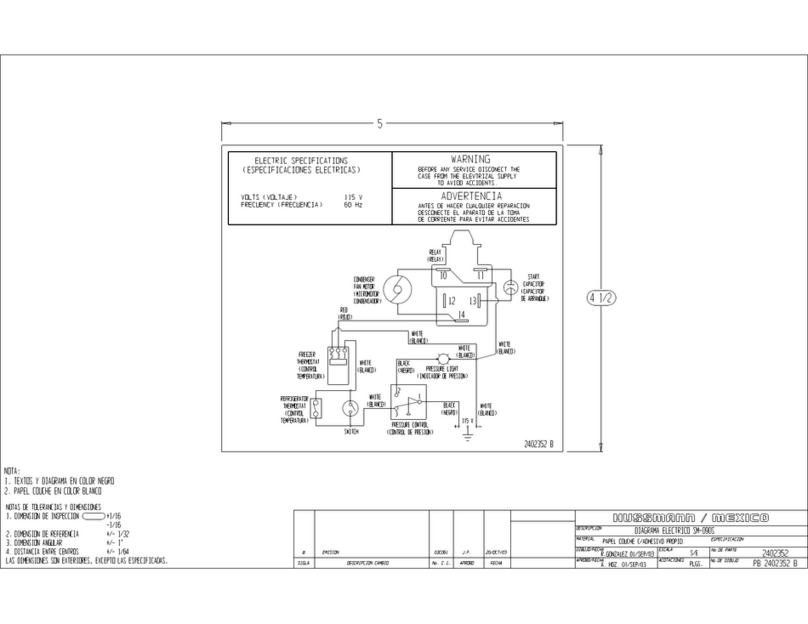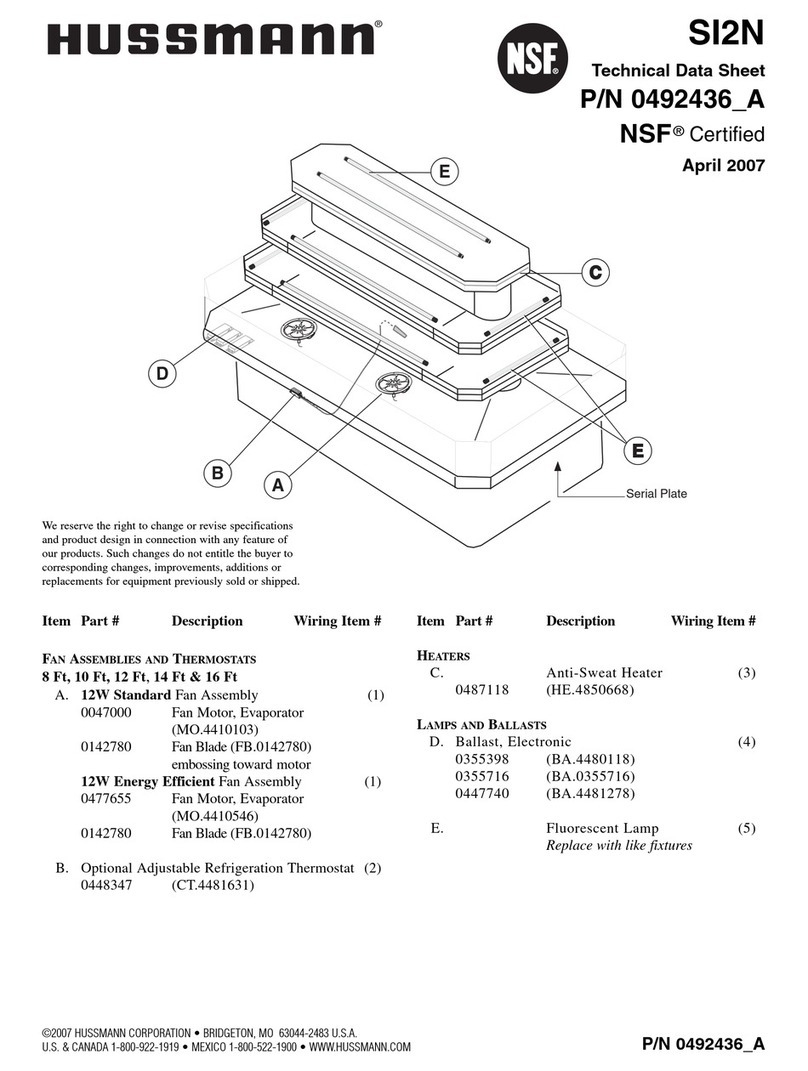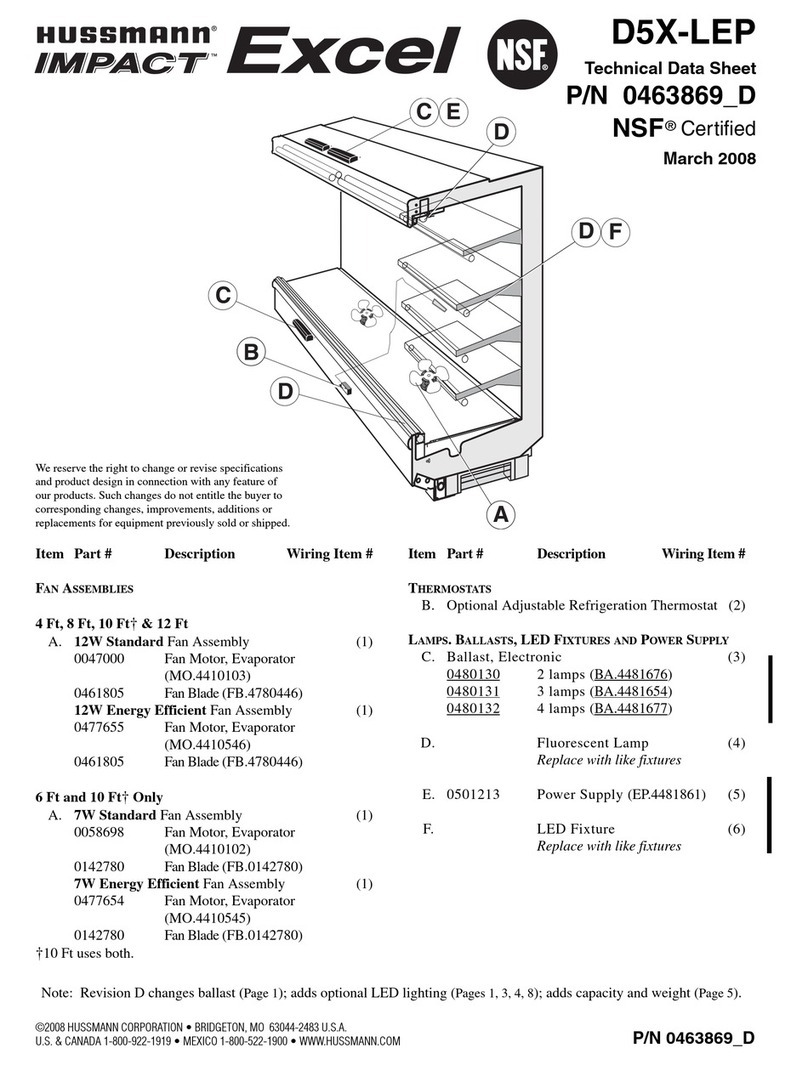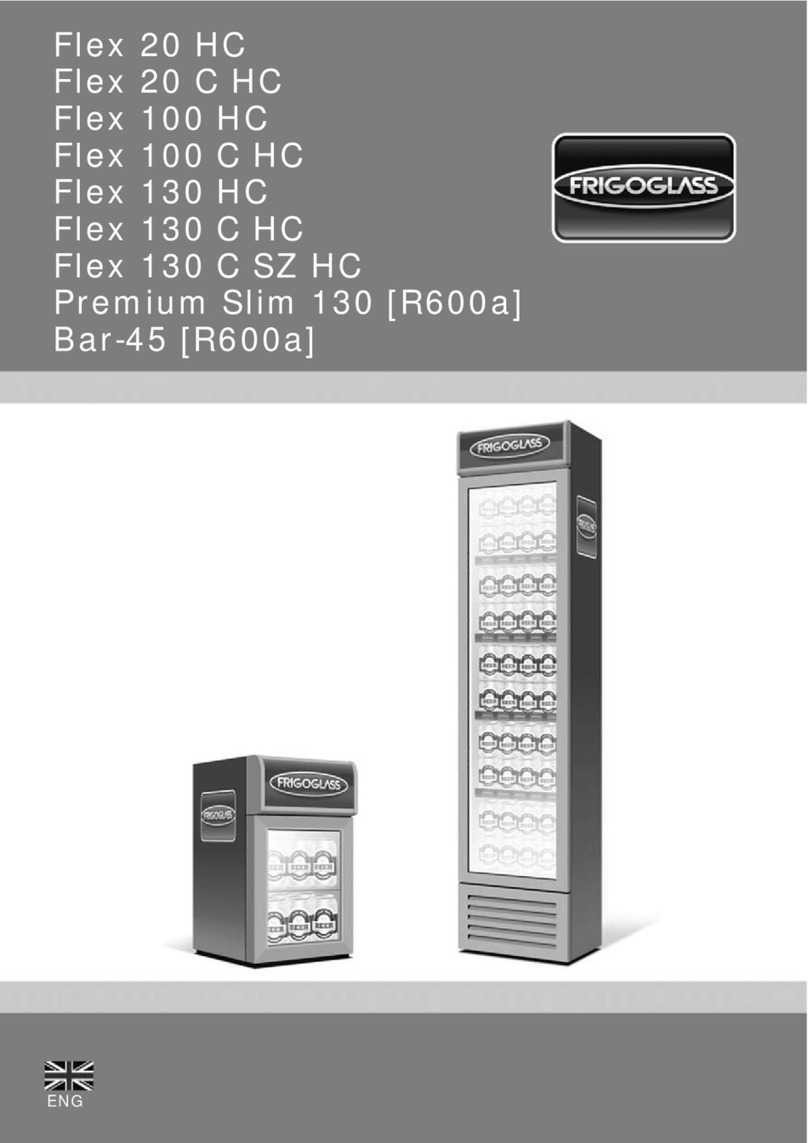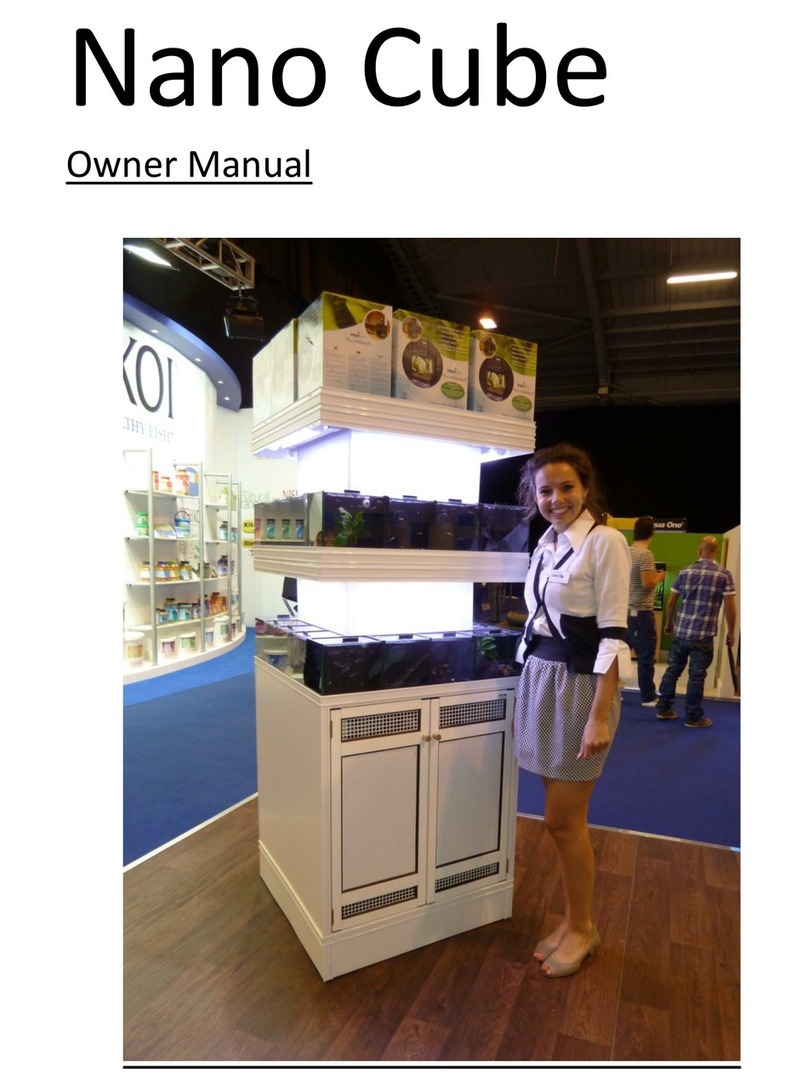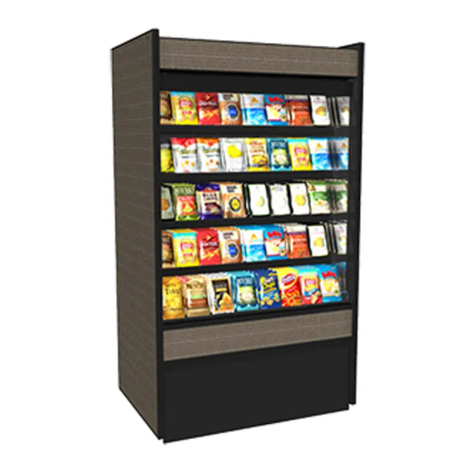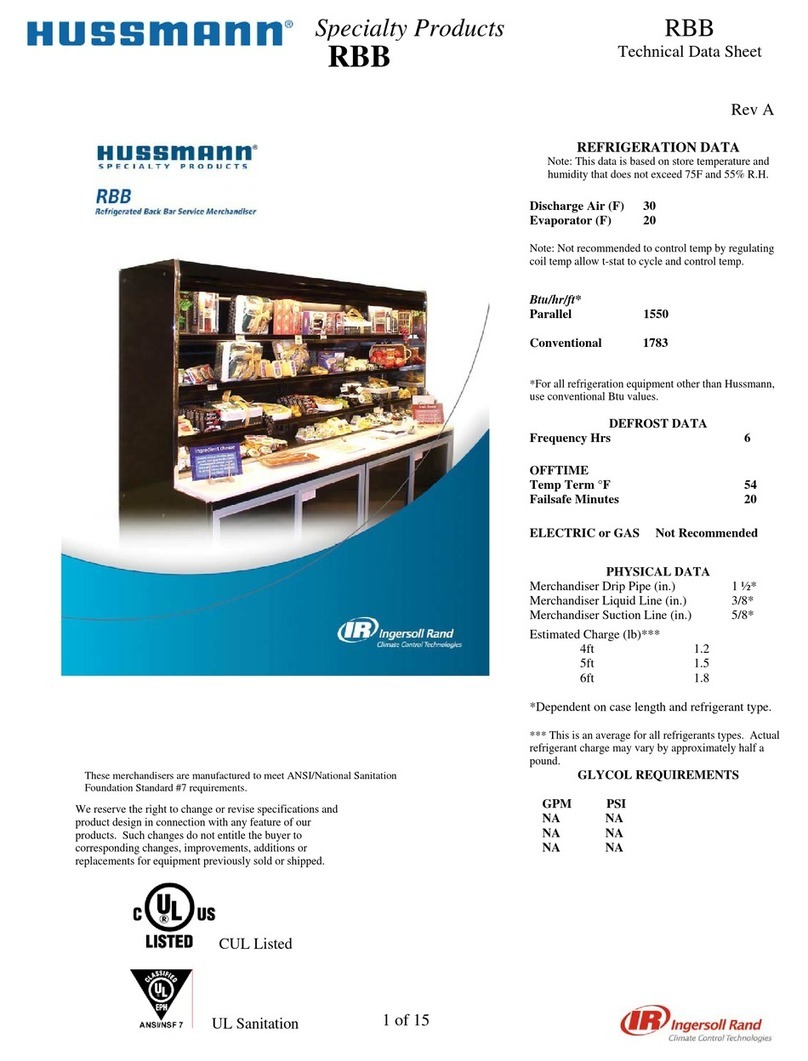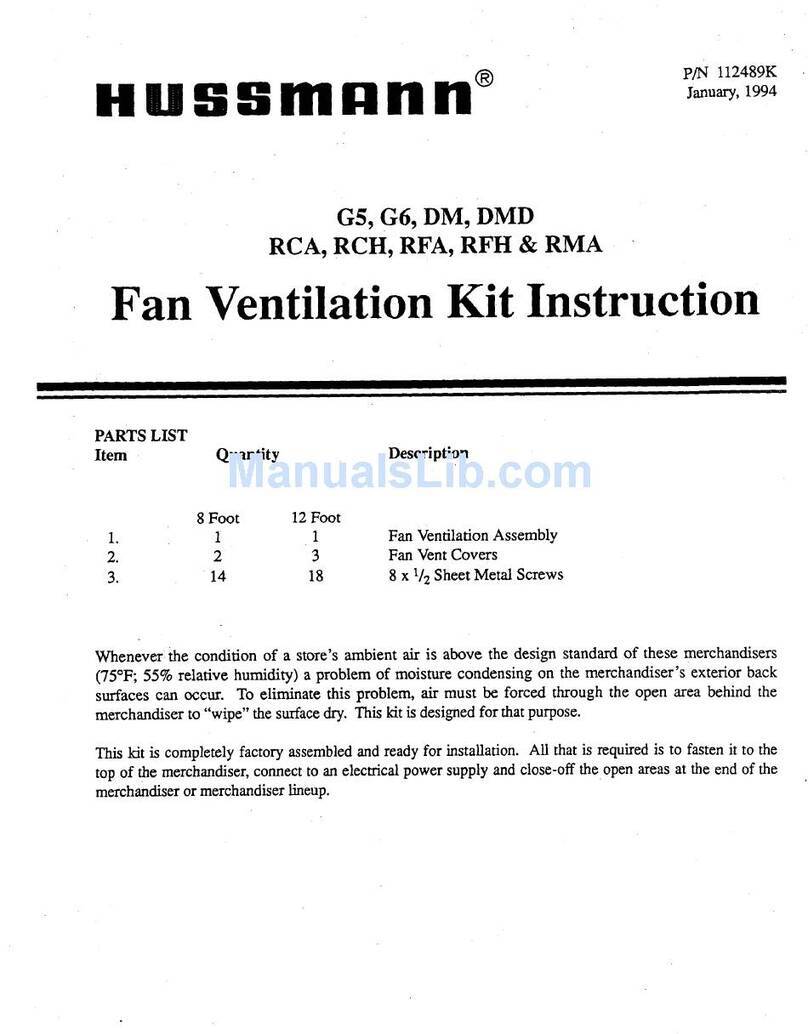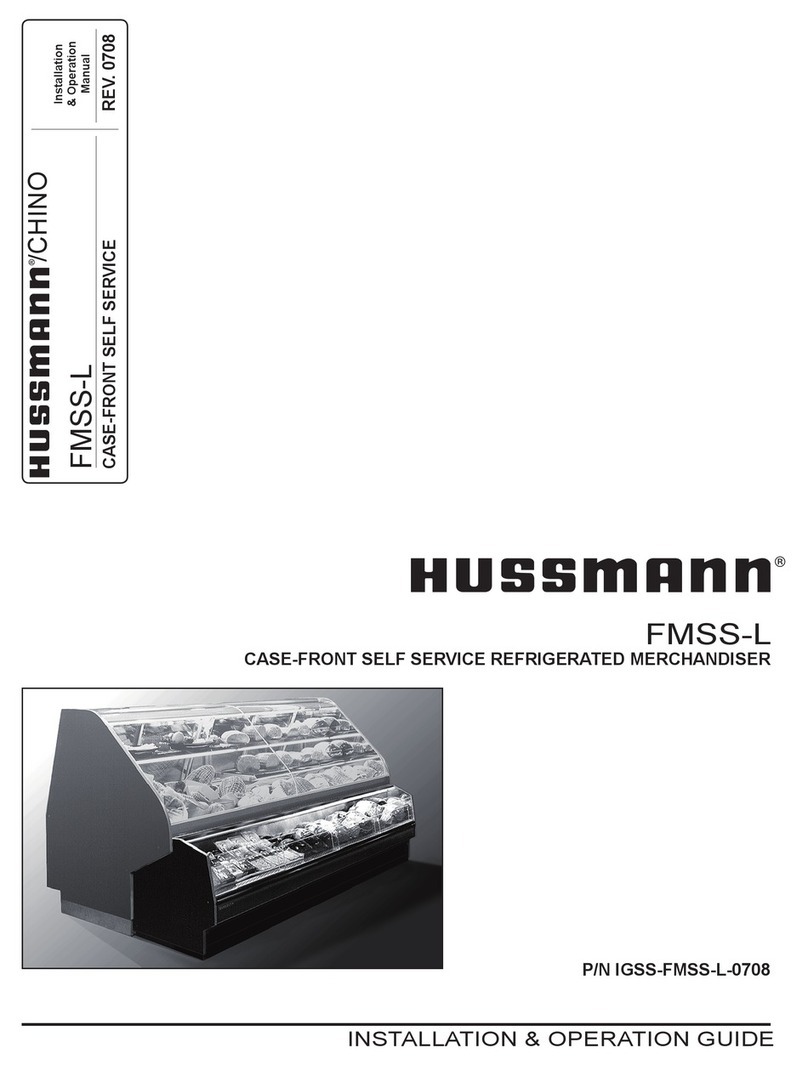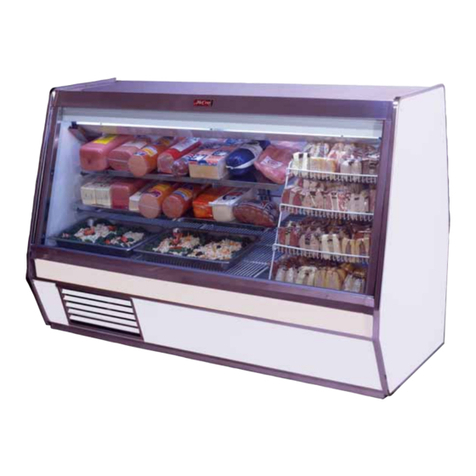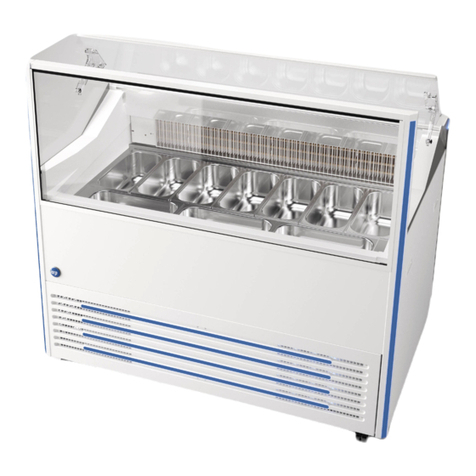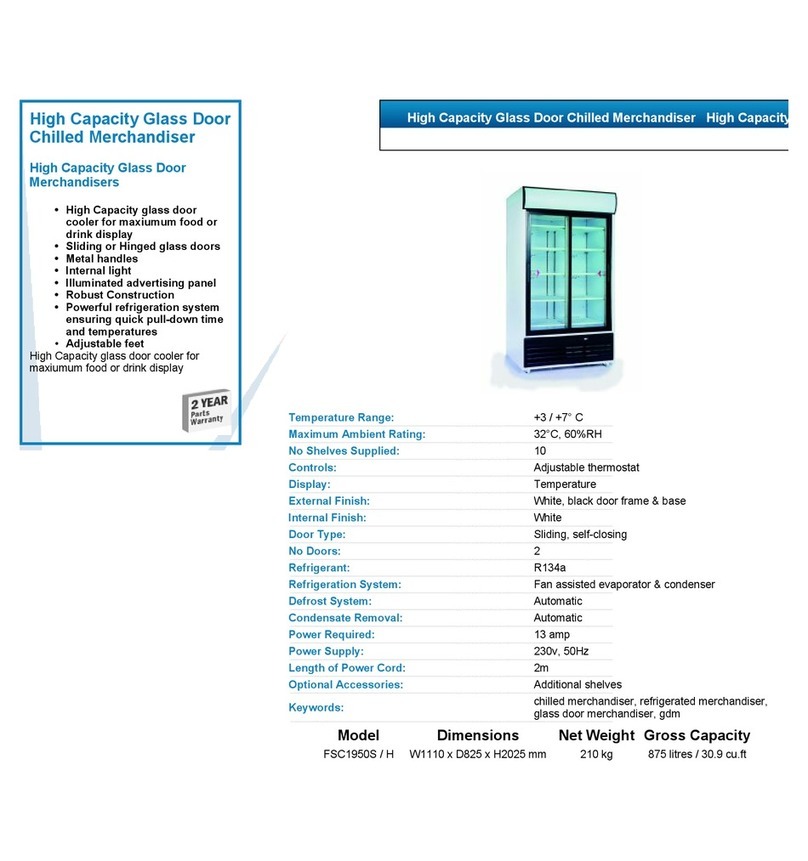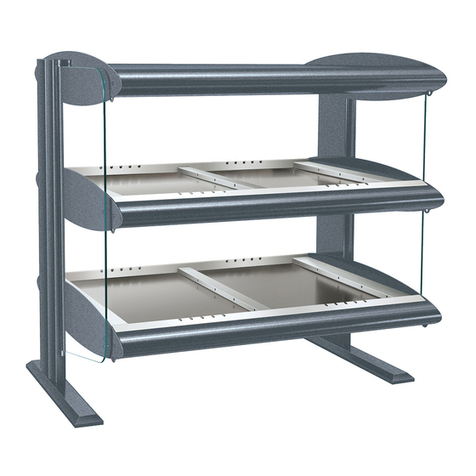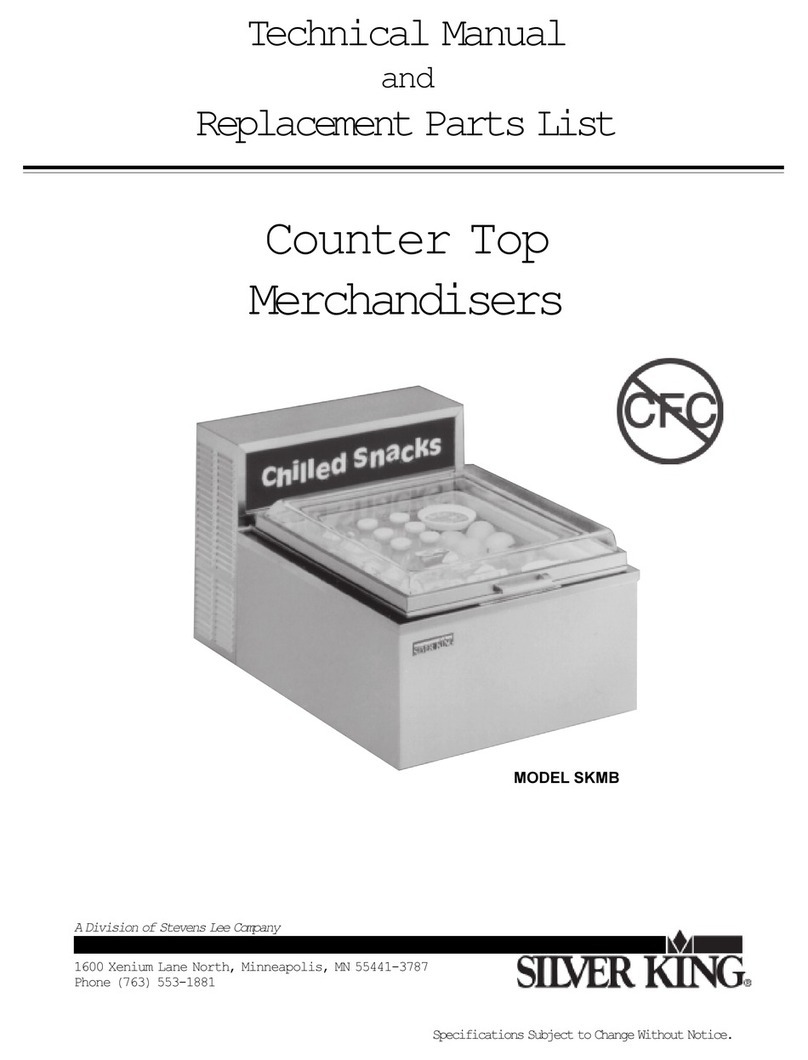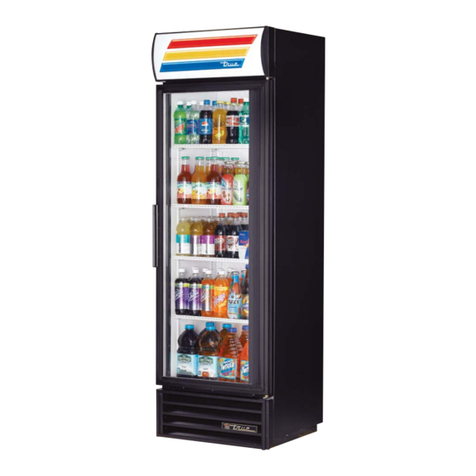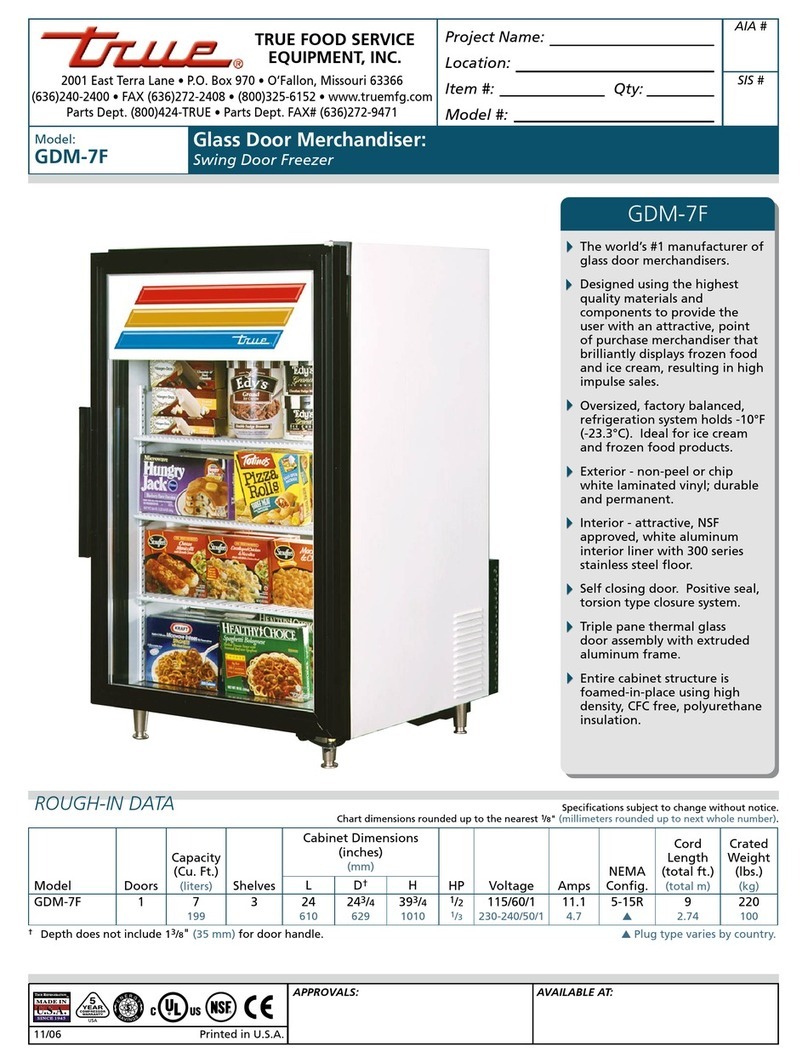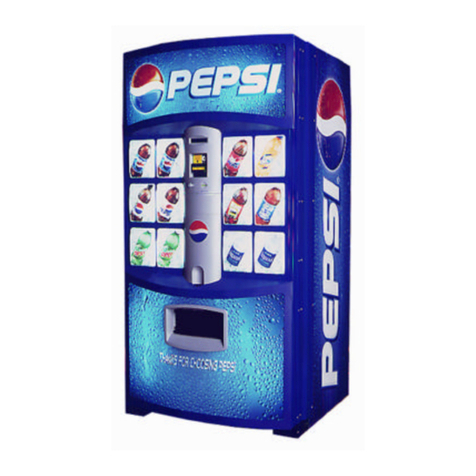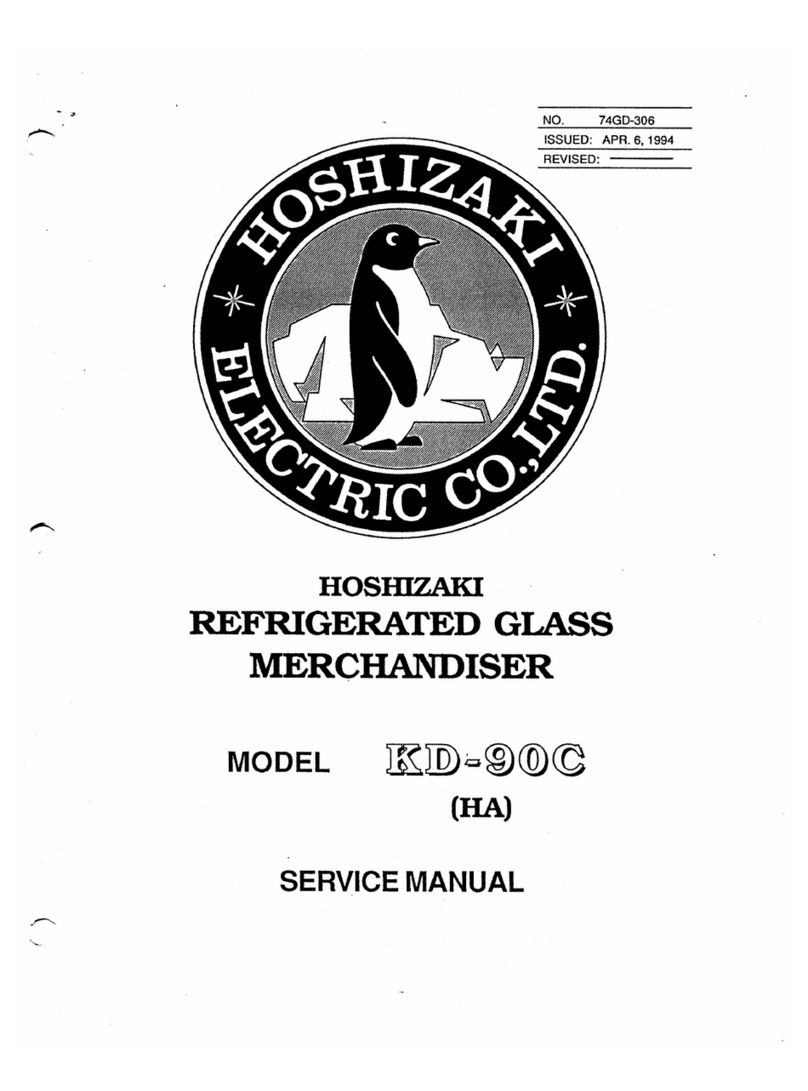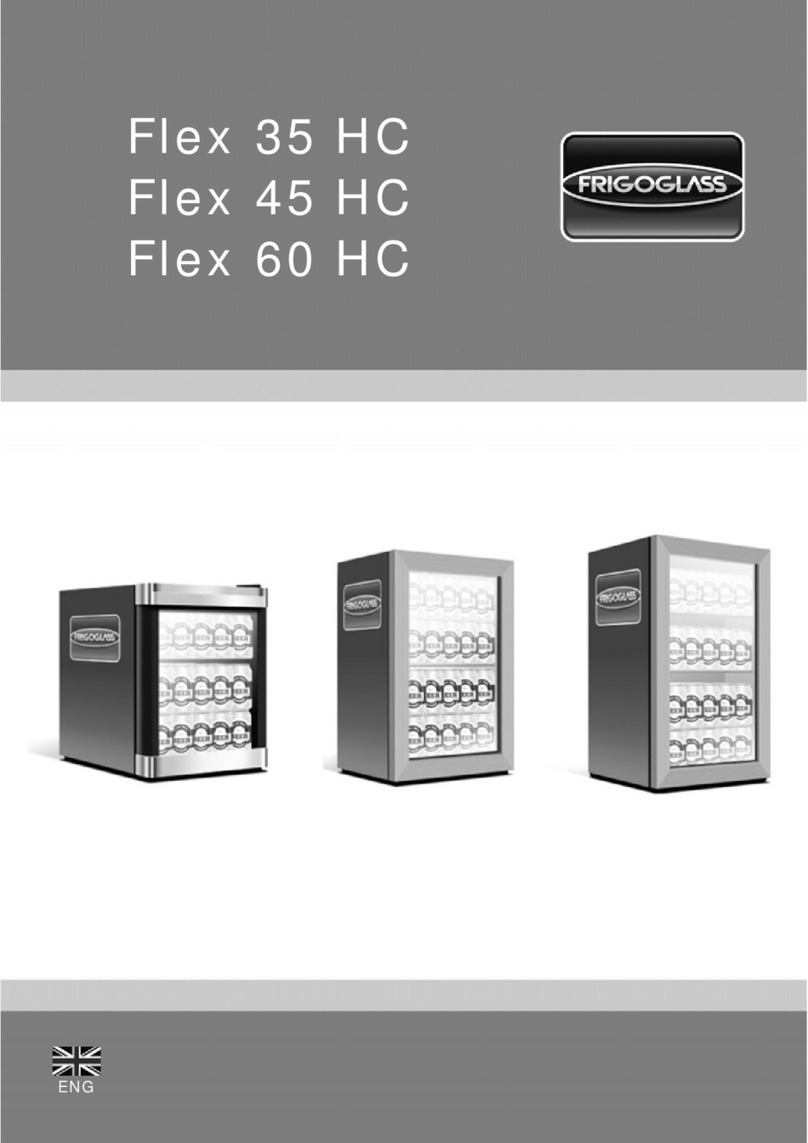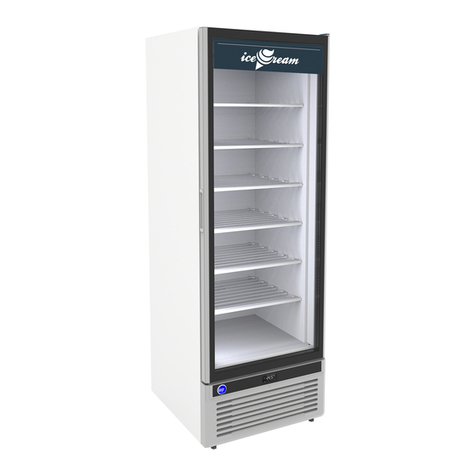
IGFP-RGSSFP-0008
6
specified.Field wiring from the refrigeration control panel
to the merchandisers is required for refrigeration ther-
mostats.Most component amperes are listed in the“Case
Specs” section,but always check the serial plate.
BALLAST LOCATION
Ballasts are located within the access panel that runs the
length of the front of the case.Refer to diagram on page
5. User Information
STOCKING
Impropertemperatureandlighting willcauseseriousprod-
uct loss. Discoloration, dehydration and spoilage can be
controlled with properuseoftheequipment and handling
of product.Product temperature should always be main-
tained at a constant and proper temperature.This means
that from the time the product is received,through stor-
age,preparation and display,the temperature of the prod-
uct must be controlled to maximize life of the product.
Hussmann cases were not designed to“heat up” or“cool
down” product—but rather to maintain an item’s proper
temperature for maximum shelf life.To achieve the pro-
tection required always:
1. Minimizeprocessing time to avoiddamagingtem-
perature rise to the product.Productshouldbeat
proper temperature.
2. Keep the air in and aroundthecasearea freeof
foreign gasses and fumes or foodwillrapidlydete-
riorate.
3. Maintainthedisplaymerchandisers temperature
controls as outlined in the refrigeratorsectionof
thismanual.
4. Donotplace any productintothese refrigerators
untilallcontrols havebeenadjustedandtheyare
operatingatthe proper temperature.Allow mer-
chandisertooperatea minimumof6hoursbefore
stockingwithany product.
5. Whenstocking,neverallow the producttoextend
beyondtherecommendedloadlimit. Air dis-
charge and return air flue must be unob-
structed at all times to provide proper refrig-
eration.
6. There arevents located at the base ofthefront of
theglass,just above the frontrail.Thesevents supply
acontinuous,gentleflowof air across the frontglass
whichinhibitscondensation. Do not place any
signs or other restrictive objects on the front
of the refrigerator that will block these vents.
7. Avoidtheuseofsupplementalfloodorspotlighting.
Displaylightintensityhasbeendesignedformaxi-
mumvisibilityandproduct lifeatthefactory.Theuse
ofhigheroutputfluorescent lamps (H.O.andV.H.O.),
willshorten the shelflifeof theproduct.
IMPORTANT STEPS
1. Donotsettemperaturetoocold,asthiscauses
product dehydration.ProductTemperature:
33°–35°!
Setthermostattocut in at 28°dischargeair.Meat
holdingbox:32°.Meat preproom:55°.Meat bloom
box:36°.
Process the meat to enter case at 40°or below.
Product deterioration is very rapid above40°.
2. Temperaturecontrol in service sections should be
bymeansofaT-Stat and Suction Stop Solenoid at
eachcase.Do not use EPR valves,Liquid Line
Solenoidsorelectronic controldevicesofanykind,
astheseallowtemperature swingscausingdehydra-
tionandexcessive energy consumption.
3. Product should be workedandrotatedonaregular
basis,nottoexceeda4-hourperiod.
4. Atnight,turn off case lights and covertheproduct
withadamp(not wet) cloth similar to cheese cloth
(etc.).Thisshouldbe washed out in the morning and
kept in a walk-in boxduringtheday—sothatitis
coolandmoist when covering the product.
5. Dischargeairtemperatureshouldbeapproximately
26°F,with between150-200FPMairvelocity.Donot
displayproduct directlywithintheairdischarge.
CASE CLEANING
Long life and satisfactory performance of any equipment
are dependent upon the caregiven to it.To insurelonglife,
proper sanitation and minimum maintenance costs, the
refrigerator should be thoroughly cleaned frequently. It is
essentialtoestablishandregulatecleaningprocedures.This
will minimize bacteria causing discoloration which leads
to degraded product appearance and significantly short-
ening product shelf life.
SHUT OFF FAN DURING CLEANING PROCESS.It can
beunpluggedwithinthe case,orshutoffcaseat the source.
The interior bottom may be cleaned with any domestic
soap or detergent based cleaners.
The use of hoses and sage machines to clean the inside of
thecasesisrecommended and is an excellentwaytoclean
the coil fins and hard to reach corners of the interior of
the cases. Be sure to observe the warnings below when
cleaning the case.
Sanitizing solutions will not harm the interior bottom,
however,these solutions should always be used according
to the manufacturer’s directions and should not contain
